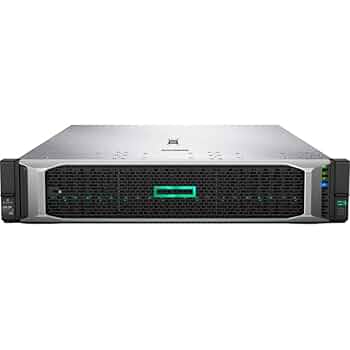HPE ProLiant DL380 Gen10 Server

The hum. It’s the first thing you notice. A low, persistent thrum that permeates the air, the sonic signature of enterprise performance. Just yesterday, I was wrestling with a client’s legacy infrastructure, a Frankensteinian collection of mismatched servers held together with duct tape and sheer willpower. Their network? A digital ghost town. Today? We’re talking about the HPE ProLiant DL380 Gen10.
Let’s be frank: the specs are impressive, on paper. A Xeon Silver 4110? Solid starting point. Sixteen gigs of cache? That’s what I like to see, especially when you’re juggling virtualization workloads. This beast is a workhorse, built for the kind of sustained performance that makes IT managers sleep a little easier at night. Remember those old DL380s from a decade ago? This is a completely different animal. Faster, more efficient, and with a much cleaner internal layout.
The real test, of course, isn’t the spec sheet. It’s the performance under fire. We installed one at a small data processing firm. They process thousands of transactions a day. The previous server, a cobbled-together affair, was consistently bottlenecked by its storage capabilities. The Gen10, however, handled the load with nary a stutter. The built-in Smart Array controllers and the ability to support NVMe drives were key here. Their data access speeds? Rocket-fueled. Suddenly, the bottleneck was gone. And the client? Ecstatic.
Now, the caveat. This server, like any other, isn’t perfect. The default cooling configuration, while adequate, can get a bit noisy in high-density deployments. Not ideal for a quiet office environment. But the beauty of a system like the DL380 is the modularity. The fan profiles are highly configurable through the iLO interface. You can dial them back to a reasonable level without sacrificing too much performance. If the noise is a dealbreaker, just tweak the settings. Simple as that.
It’s a rock-solid choice, the DL380 Gen10, particularly for businesses looking to modernize their infrastructure. If you’re a growing enterprise, and your existing server setup is starting to creak at the seams, this is a very strong contender. Consider it seriously. Go ahead and take the leap. You won’t regret it.